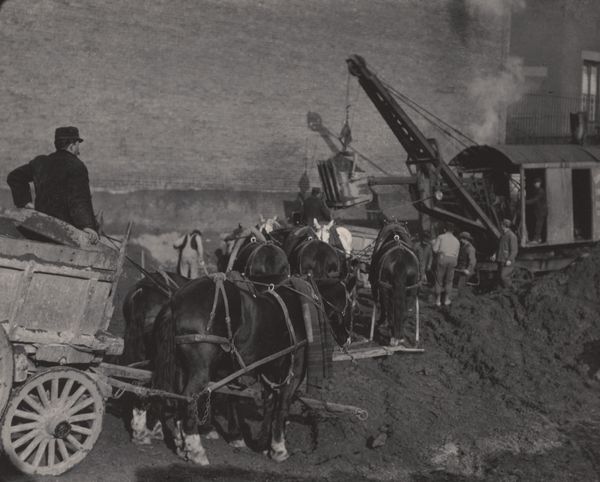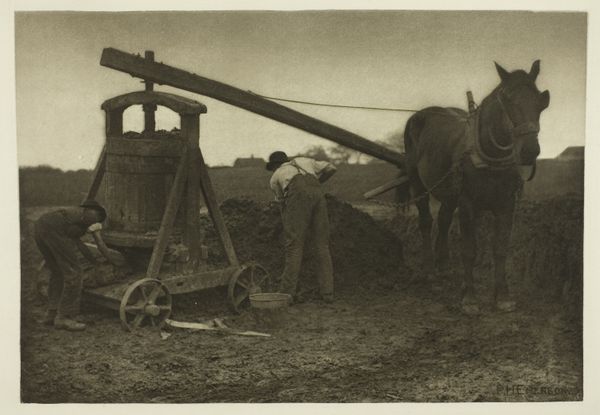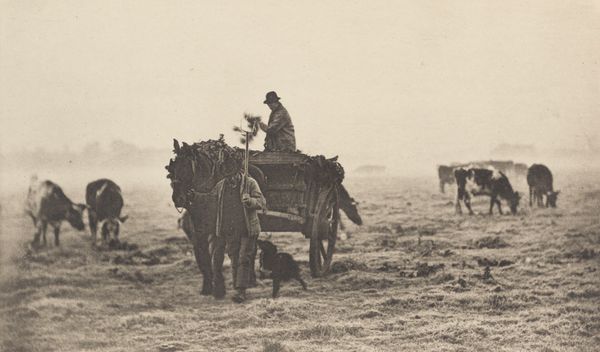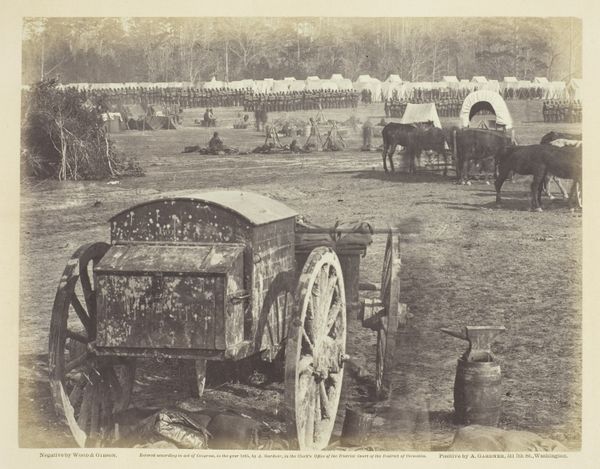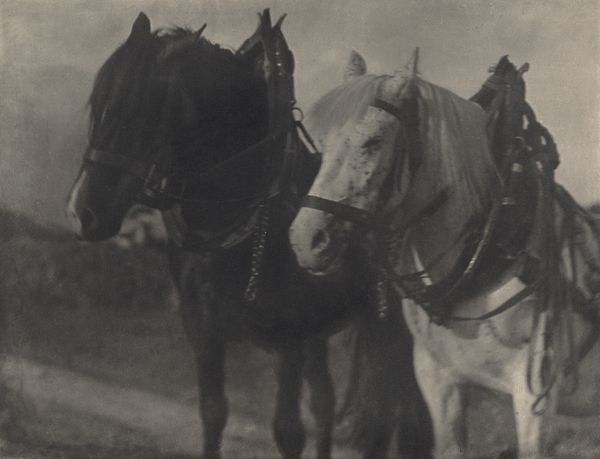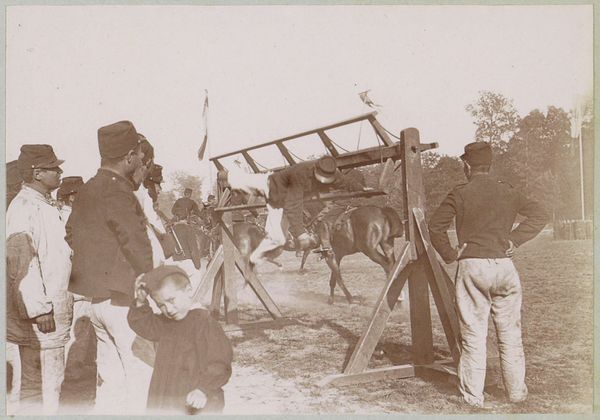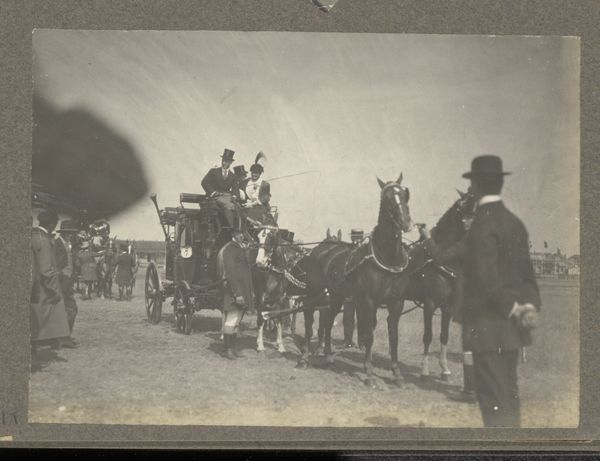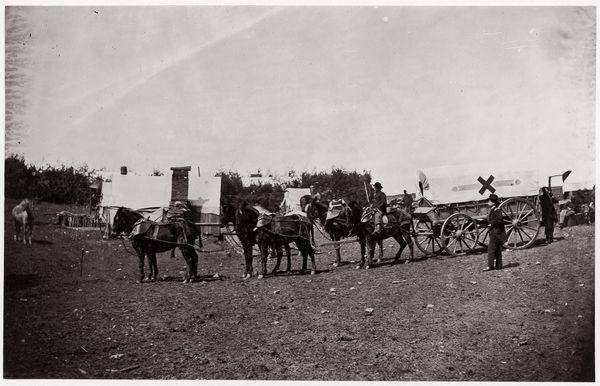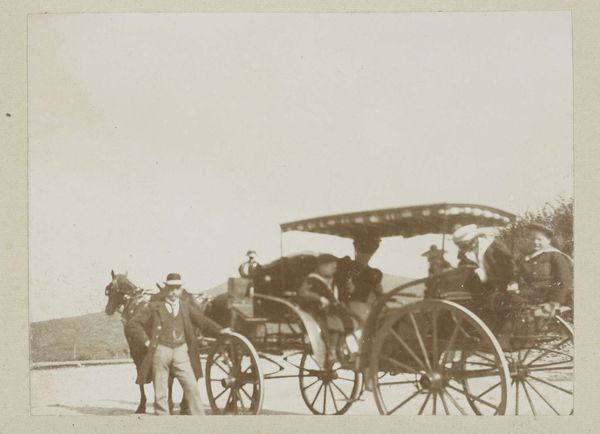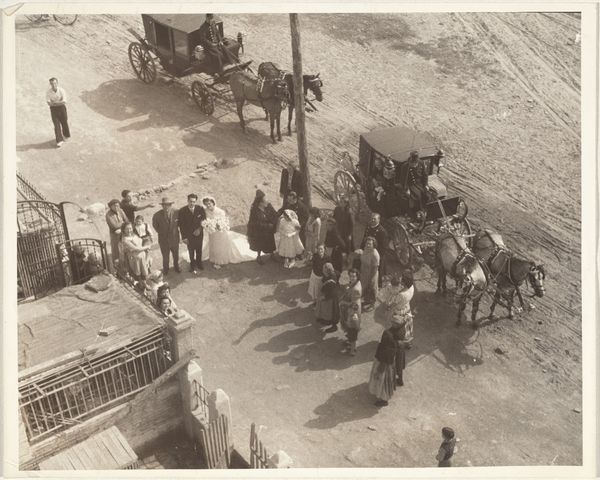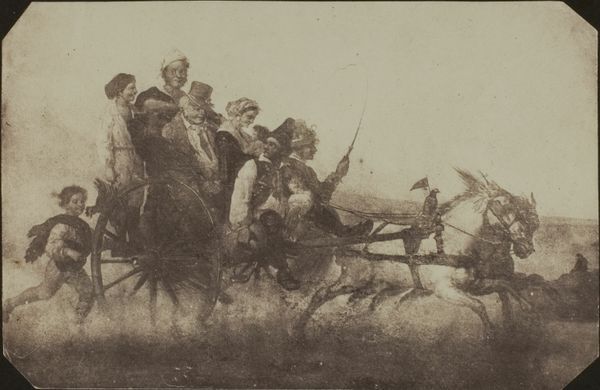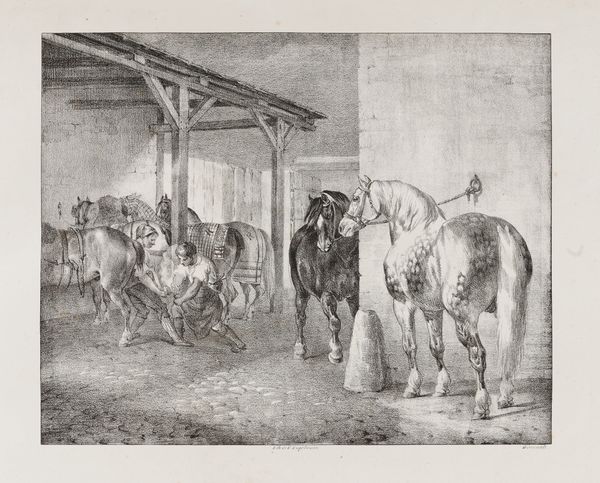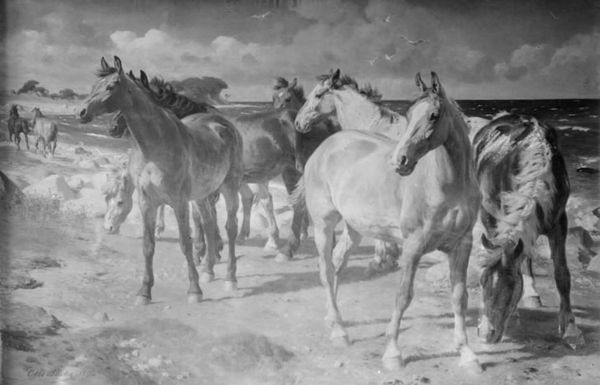
photography, gelatin-silver-print
#
black and white photography
#
landscape
#
black and white format
#
photography
#
gelatin-silver-print
#
monochrome photography
#
cityscape
#
modernism
#
realism
#
monochrome
Dimensions: sheet (trimmed to image): 8.6 × 11.4 cm (3 3/8 × 4 1/2 in.)
Copyright: National Gallery of Art: CC0 1.0
Editor: This gelatin silver print, titled "Excavating, New York" by Alfred Stieglitz, made sometime between 1911 and 1932, depicts an industrial scene, dominated by horses, carts, and a crane against a backdrop of what appears to be a brick wall. It feels gritty, capturing the city's relentless progress. What strikes you about this piece? Curator: For me, this photograph serves as a stark reminder of the cost of progress. The sheer labor involved in building modern cities is etched in every shadow. Consider the intersectional power dynamics at play: the wealthy landowners profiting from development, the laborers risking their bodies, and the animals caught in between, all contributing to a rapidly changing urban landscape. How does this image resonate with contemporary debates about urban development and social equity? Editor: That's a powerful way to look at it! I hadn’t considered the social hierarchy so explicitly. Is Stieglitz intentionally commenting on these issues? Curator: Stieglitz, as part of the Photo-Secession movement, aimed to elevate photography to fine art status by exploring themes of modernity. While not overtly didactic, this image offers a critical perspective. The photograph encapsulates how the relentless pursuit of progress often occurs at the expense of both human and animal welfare. The scene depicts human effort that now, seems like animal cruelty, an activity to be left behind. Editor: So it’s less a celebration of progress and more of a documentation, allowing us to reflect on its complex implications? Curator: Precisely. Stieglitz presents us with a snapshot of a society in transition, a moment ripe with inequality, where progress comes at a tangible, and often unseen, human cost. The lack of visible joy in this supposedly productive scene reinforces a need for change. What lessons can we draw from this image as we continue to shape our urban environments? Editor: I see it now; it's a powerful reminder that progress must include fair labor, and respect for all life involved. Thank you for opening my eyes to these different lenses for viewing this work! Curator: Absolutely! This photograph challenges us to interrogate whose stories are told and whose are erased in the relentless march of "progress". A perspective needed as relevant now as ever.
Comments
No comments
Be the first to comment and join the conversation on the ultimate creative platform.
